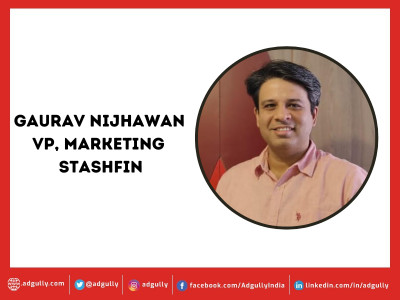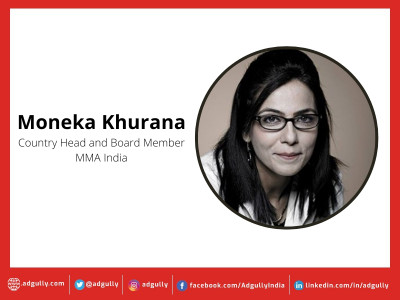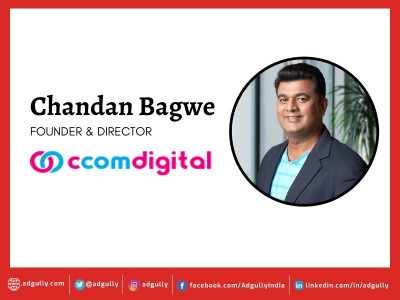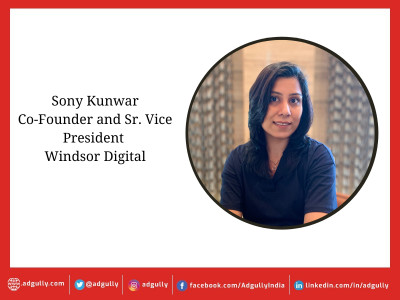SEO – Why marketers should consider this free avenue for brand engagement
Meera Iyer, Chief Marketing Officer, Medlife.com, writes about the power of SEO for building traffic and engaging audiences. Here, she shares several helpful tips in the technological aspects of SEO implementation, the Do’s and Don’ts, and how brands can make the most of their SEO strategy.
Having spent the last 5 years in e-commerce, I have come to very much appreciate and value the power of SEO for building traffic, engaging audiences as well as making your metrics rosier, given that this comes free! However, in my conversations with most offline businesses, I see that they have not yet stumbled upon this powerful channel towards brand building. So, here’s my attempt to help the uninitiated understand about SEO – in the way offline marketers, particularly the brand managers, understand.
WARNING: If you are already in the SEO race, this article will be too foundational; my advice – skip it.
Technology & particularly search engines like Google, Bing, duckduckgo, etc., should be credited for eliminating information asymmetry. They clearly also did the smart thing in monetising this curious nature of humans through SEM routes. But not before they cracked customer experience in being able to throw up the most relevant search results for the millions searching an absolutely myriad set of topics.
Imagine the search engine to be a physical library. You need to classify and keep books neatly arranged in sections to be able to find it within some approximation of shelves. If that were not the case, and all books were randomly put, one would need to spend a crazy amount of time searching and most likely, the person would skip the book rather than waste hours finding it. SEO algorithms are to Internet searches what a librarian’s shelving plan is to a library. All search engines spend millions of dollars finetuning this algorithm to give users the most relevant results for searches, so you don’t abandon it but actually begin loving it for helping you out with what you seek. And this doesn’t cost the end customer or the web page owner anything!
Today’s audiences are breaking ceilings with their searches – the free flow of information has meant a mad rush to ask the search engines a plethora of questions – from celeb gossip to beauty tips to recipes to parental advice and what not. There is a whopping 8.7 Lakh searches in India around Acne & pimples – imagine Himalaya having a forum just for this with the right content – It can own this space. Do you know that there are over 26 lakh searches happening around pregnancy? Imagine if Johnson & Johnson had had the foresight to have started a baby centre – what a great medium it would have been for the brand to build consideration! My argument is that if your brand is a solution to a problem or has a specific social objective which has more than a million searches every month, you will be wise in creating a meaningful engagement platform online to build your brand through SEO. If you are able to create solid content that ranks high for the right keywords, traffic to your page can snowball over time and be a leading source of brand engagement.
So, if you are a marketer and you want to also get some free customer engagement through SEO, then the task for you is to:
- Have a digital page/ site for your brand that the search engines recognise as a “result” it can throw up for “relevant searches” – This is indexing.
- Get this page to rank up among the top searches on the very first page to get maximum clicks – This is ranking.
My article is going to revolve around these 2 basic SEO concepts to help drive brand engagement.
A Basic principle first: Make the page for the CUSTOMER, not for Search engines. Once you are sure you have a great way to engage your audience if they land on the page and thereby build brand love, then you go on to ensure you are SEO optimised. This aspect of customer first is what I find lacking in most SEO professionals and sadly, in case of the brand managers, they don’t follow the technical part of SEO. So, if you are building a page for the first time, do spend time asking if this will be of use to your target audiences and would you still be making this page if search engines did not exist and you had to promote the URLs only. If sales is your only motto, invest in content in the e-commerce sites itself, don’t waste your time and resources on building your own webpage.
Indexing & Ranking
There are millions of web pages. Many sites are single page sites and there are equally sites that have a ton of pages – notably e-commerce sites (like @Medlife) with their vast catalogues. Search Engine Bots (Crawlers) are programs built to automatically discover and scan websites. Day in & day out, the bots will look for updating its library of Internet pages with the latest information so that it can:
- Either classify the page as “available” to display in search results or not index the page at all. (You can give the bots a signal that you do not want certain pages like a user profile page, etc to be indexed)
- Determine what all searches (keywords) is the page relevant for
- Rank the page in the list of similar pages by how well it matches a user query – This is a dynamic rank order that’s subject to changes basis your SEO inputs.
There is a fair bit of technical dos you need to follow to get your webpage up with all the checkmarks for SEO ticked. I won’t dwell on that – you will, as an offline brand, most definitely use an agency to manage those aspects for you. But here are the most critical things to consider while creating the content on the page that you should get somewhat familiar with:
- Learn what your customers are searching about the category you operate in. There are easy tools that give you search volumes. It also gives you related searches. Take a look at this example. I asked Google “how to heal cracked lips”. Nivea’s Australian site ranks up highest after shopping ads! How cool is that? Search results will throw up your results in any part of the world if you’ve managed to get a great page authority.
- Create popular and engaging content around these searches. Content is indeed the biggest key here. Your page should be structured well. It should answer the question posed by the user well and have a pleasing user interface. At the same time, your page should also be optimised for search engines – that includes your URL, page load speeds, meta titles & description, Headers, Schema, Sitemaps and much more – again, leave this part to the experts. An important aspect as you design your page is to make sure it is mobile friendly – 95 per cent of all Internet browsing in India happens on mobiles!
- Have a comments and a share button section on your page – It will be a good measure of how good your content is. People tend to spam the comments section at times with links – just take care of it by putting a “no follow” value on this section of your page, so that the search engines ignore such links.
- Beware of duplicate content! If search engines find two pages with identical content, it will only index one of those pages. There are some scraping sites notorious for doing this. Given the content explosion today, it is only likely that someone has already put up something on a keyword you are aiming for. Please make sure you use anti plagiarism tools to be unique.
- Spread your page links. The easiest way to do that is if you have original and exclusive content that no one else has access to. Link building is an important way to rank your page up. You need to monitor that and keep building up on your page authority through links to your site that is published in other web pages.
While working at HUL, we started the https://www.bebeautiful.in site, keeping in mind the growing need for beauty tips, styling advice and product information. It did really well when launched because it made a real difference to customers. Similarly, if your brand stands for a health condition, say diabetes care, you could own the narrative by being a content powerhouse for the millions of searches happening on the disease every month. You can even partner with e-commerce sites in this endeavour and create content sections powered by your brand – it’s a win-win situation as the commerce site gets free traffic and your brand gets strong associations.
On the search trends themselves, a good deal of searches today are happening on YouTube – in fact, the searches there have surpassed the searches on Google web. That’s a shift in behaviour, and while I will pen down my approach on YouTube another day, for me, there is a mega opportunity to be grabbed by brands – understanding SEO and jumping in if you really have a great proposition for your target audiences to engage them with meaningful content.
I hope this was simple to understand and has gotten you thinking whether SEO fits your brand and how best to use it. Happy to help if you need any!















Share
Facebook
YouTube
Tweet
Twitter
LinkedIn